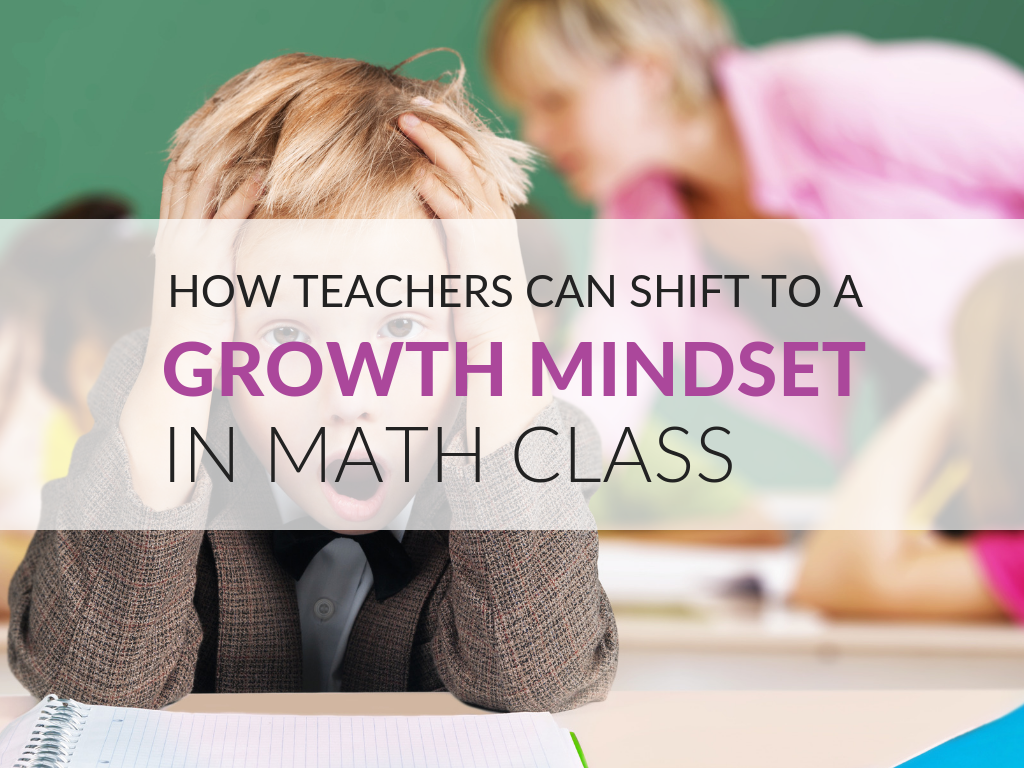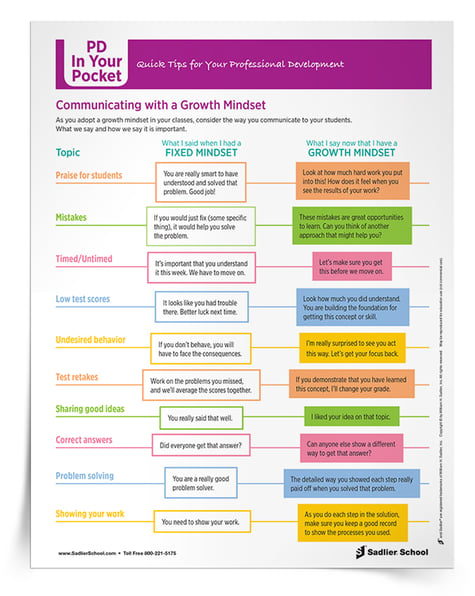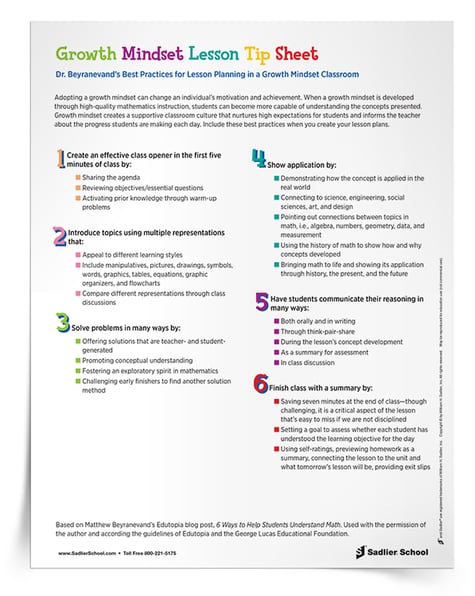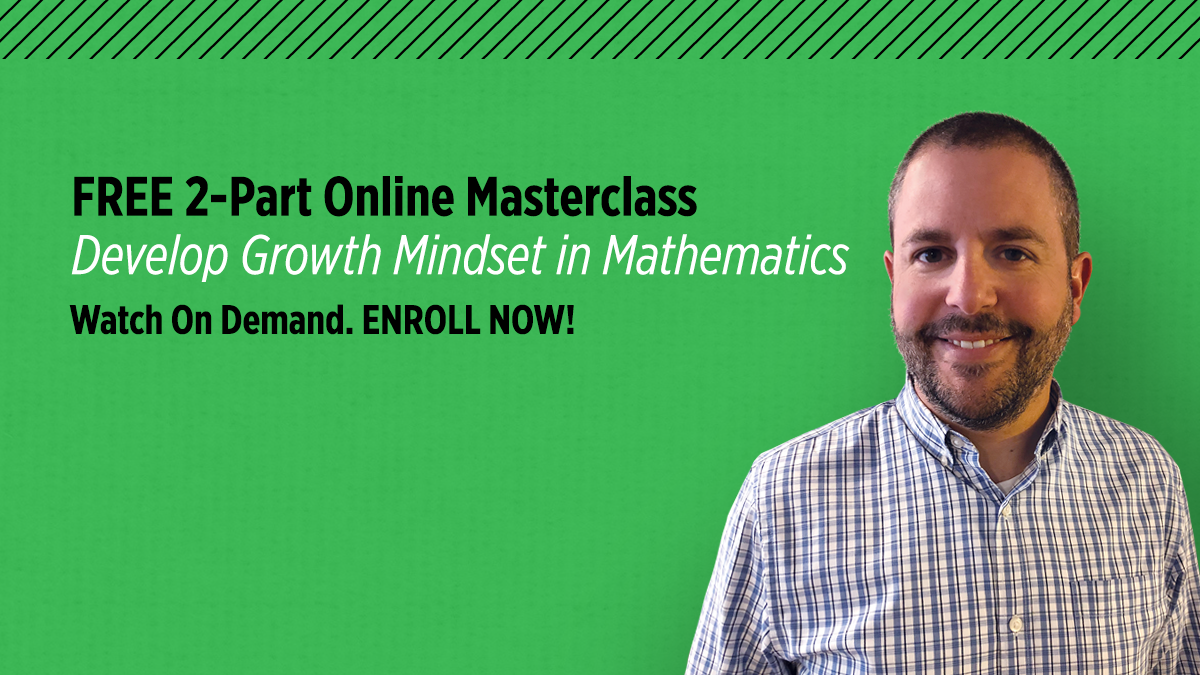June 3, 2025 other-professional-development
Growth Mindset In Math –Teacher Mindset Is The Key To A Shift In Students
By: Jeff Todd
Growth mindset isn’t just a buzzword—it’s a powerful framework that can reshape how students approach learning, especially in math. While the work of experts like Carol Dweck and Jo Boaler has helped bring these ideas into the spotlight, applying growth mindset in a real classroom starts with one key factor: the teacher’s mindset.
In this post, you’ll explore what it means to adopt a growth mindset as an educator and how that mindset can transform your teaching—and your students’ outcomes.
Download the Communicating with a Growth Mindset Tip Sheet now.
Teacher Mindset Is The Key To A Growth Mindset Shift In Students
I once had a powerful conversation with my friend and colleague Dr. Matthew Beyranevand about what growth mindset looks like in a math classroom. As the Director of Math and Science Curriculum in a neighboring public district—as well as a national presenter and author—Dr. Beyranevand has long been committed to helping educators shift how they think about student learning.
During that discussion, Matthew shared something that has stayed with me ever since: growth mindset doesn’t begin with students—it begins with teachers. If educators don’t believe in the power of growth and effort, they’ll never convince their students to believe it either.
It reminded me of what I observed when I watched him teach years ago. His classroom felt alive—with students curious, engaged, and unafraid to try. That environment was the result of an intentional mindset shift: from seeing math as static to seeing it as an opportunity to grow.
How Teachers Can Develop a Math Growth Mindset
Matthew and I share a foundation from our graduate training that shapes how we think about learning. When it comes to fostering a growth mindset in students, we believe that two core principles guide teacher practice:
#1 All Students Can and Want to Learn Math
Implicit in the title of the 2002 No Child Left Behind Act, is the idea that all students should be able to learn math. The recent data from international testing show that we are making progress in the United States, but despite this growth there remain persistent gaps in achievement related to race, ethnicity and income. Students from these groups are under-represented in the Science Technology, Math and Engineering programs at the post-secondary level. Many students graduate from high school and are not prepared for the rigors of college.
In fact, despite 25 years of “leaving no child behind,” we are still doing so. Thus the need for a renewed emphasis on a growth mindset, so that every child can learn. Here are some ideas that Matthew Beyranevand shared about teachers making the shift to a growth mindset.
-
Teachers need to create an environment in their classes that leads students to notice that mathematics is interesting and to create a sense of wonder among their students. This leads to authentic engagement and requires that teachers see math as something exciting and interesting, rather than as routine and algorithmic.
-
Teachers need to adopt a mindset where mistakes are both common and accepted in the classroom. For example, after students have initially learned about a topic, the teacher can introduce incorrect examples and show problems with common errors. This promotes the idea that mistakes should be a topic of conversation among the class and between peers.
-
Teachers need to learn to validate students who make mistakes. Looking at a problem for what has been done well, despite the fact that there are mistakes, helps build students’ self efficacy. They have learned something about the topic without yet mastering it. The word “yet” is an important part of the discussion between a student and the teacher who has adopted a growth mindset.
-
Teachers need to choose their words carefully. For the most part, we weren’t part of a growth mindset culture in the schools we attended. We are used to the old “scripts” of the classroom. I have had to carefully reconsider what I say to students about their work.
As part of Sadlier's new PD in Your Pocket series, I created a printable PDF download that shows teachers growth mindset versus fixed mindset interactions with students. This one-page download would be perfect to take to a professional learning community or department meeting in order to spur discussion about how to rethink how you interact with students. You might also want to post it in view of where you teach in your classroom to remind you of the mindset you want to demonstrate in your classroom. It lists ways that I used to speak with my students before I had consciously adopted a growth mindset and ways that I speak to them now in this new paradigm. Download the Communicating with a Growth Mindset Tip Sheet now.
#2 Solid Lesson Planning and Pedagogy
Growth mindset thrives when students are immersed in thoughtfully planned, engaging math experiences. Dr. Beyranevand outlines several practices that support this in his article 6 Ways to Help Students Understand Math—which I’ve summarized in the downloadable tip sheet below.
According to Matthew, strong growth-mindset teaching includes:
- Presenting multiple strategies and examples to demonstrate flexible thinking
- Encouraging collaboration on solutions to foster peer learning
- Setting clear lesson objectives and reviewing learning to reinforce key takeaways
In my own classroom, I’ve seen how these strategies spark both achievement and excitement. Students begin to shift from fear to curiosity, from confusion to confidence.
Having been trained as math educators in the same graduate program, I have seen firsthand how implementing Beyranevand’s lesson planning best practices have helped my students to achieve growth. Not only do they achieve that growth, they also develop understanding, admiration and even excitement about math.
Matthew Beyranevand, has a free ON DEMAND Develop Growth Mindset in Mathematics Masterclass. If you would like to see how you can further your own journey from being a fixed-mindset teacher to a growth-mindset teacher, enroll now!
In Summary
When you shift your mindset, you open the door for students to shift theirs. By modeling curiosity, embracing mistakes, and planning lessons that challenge and support, you show students that growth is not only possible—it’s expected.
Whether you’re just beginning this work or looking to deepen your practice, these strategies and resources will support you in becoming a more intentional, growth-mindset teacher.








